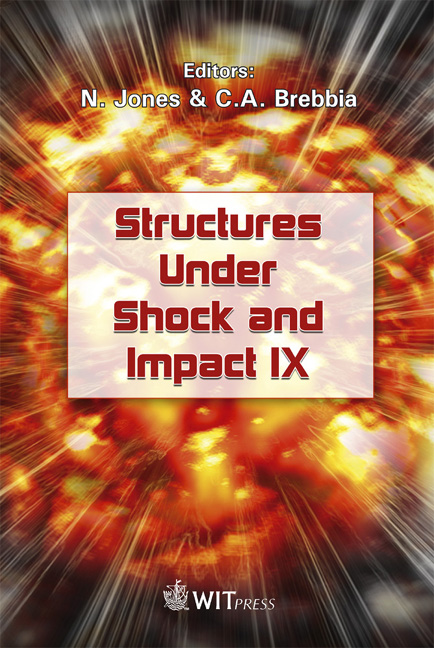Mechanical Properties Of Plain-woven CFRP Reinforced By Spread Fiber Tow During And After Drop-weight Impact
Price
Free (open access)
Transaction
Volume
87
Pages
10
Published
2006
Size
630 kb
Paper DOI
10.2495/SU060441
Copyright
WIT Press
Author(s)
K. Toyota, K. Okubo, T. Fujii, T. Oguri, T. Uenoya & T. Sugawara
Abstract
For this paper, the impact behaviors and the damage state of plain-woven CFRP reinforced by spread tow due to falling weight were evaluated. Stress-Strain responses of the CFRP using spread tows were investigated under drop-weight impact loading at room temperature. Three leveled impact energy was applied to the surface of the specimen in the drop-weight test. The peak load and absorbed energy were then compared with those of a conventional one and the experimental results showed that the peak load and absorbed energy of the developed CFRP were higher. A large amount of energy was absorbed due to the propagation of macro cracks and delaminations near the counter surface in the developed CFRP. When reinforced by spread tow its structure absorbs a large amount of energy after the initial stage of impact damage. The SAI (static strength after impact) and the FAI (fatigue life after impact) were also examined and the tensile test results showed that the static strength retention of the developed CFRP was higher than those of a conventional one. The developed CFRP also has long fatigue life under the tension-tension cyclic load after the impact. It was found that it maintained superior mechanical properties compared to the original, even after the material was damaged due to impact, because critical propagation of the debonding was prevented around the warp of thin cloth. This paper concludes that reinforcing with spread tow is effective for improving the mechanical properties of plain-woven CFRP during and after impact loading. Keywords: impact, plain-woven fabric, CFRP, spread tows, energy absorption.
Keywords
impact, plain-woven fabric, CFRP, spread tows, energy absorption.





